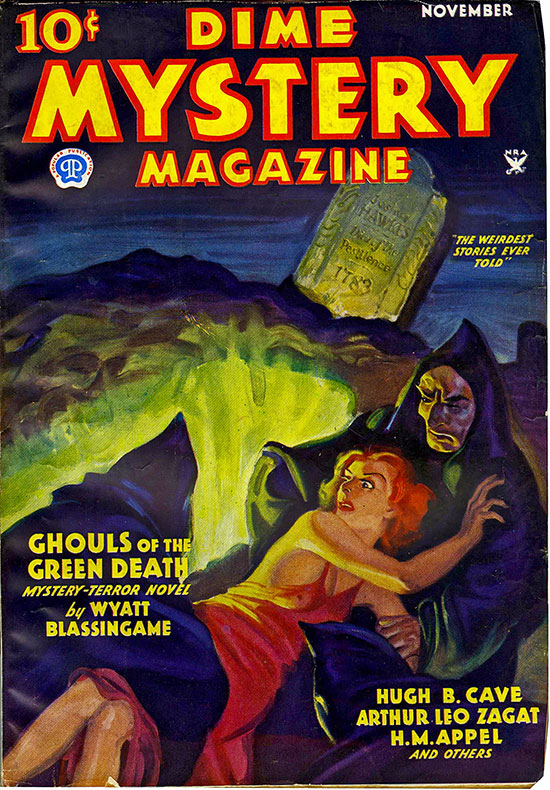It’s the November 1934 number of Popular Publications‘ Dime Mystery Magazine.

Just a year early, the pulp had evolved from Dime Mystery Book Magazine — featuring “a new $2 detective novel” for 10 cents — into Dime Mystery Magazine — featuring “the weirdest stories ever told.”
Dime Mystery Book had failed to find buyers among the detective pulps on the newsstand, so publisher Harry Steeger and editor Rogers Terrill took the magazine in a different direction.
Considered the first “shudder pulp,” it introduced weird menace — a combination of mystery and terror — to pulp readers. Sure, horror wasn’t new, even in the pulps (Weird Tales, which first appeared in 1923, was devoted to it). But this was a new twist.
What was a weird-menace story? Fictioneer Richard Tooker explained it in the June 1936 issue of Author & Journalist this way:
“A fearful menace, apparently due to supernatural agencies, must terrify the characters (and reader, but not the writer) at the start, but the climax must demonstrate convincingly that the menace was natural after all.”
That realignment proved a success. Dime Mystery continued for over 140 issues more.
A woman in distress was a common feature of pulp magazines, but it was a requirement for the shudder pulps. That and grotesque, evil men doing their dirty work, usually torture of some sort.
This cover, by perennial pulp artist Walter Baumhofer, has the menacing, hooded men about to toss a distressed damsel into a eerily glowing open grave.
This issue featured “Ghouls of the Green Death” by Wyatt Blassingame, who was a regular in the weird menace pulps. Well, actually all of the authors teased on the cover were regulars in the weird menace pulps — Hugh B. Cave, Arthur Leo Zagat and H.M. Appel. (Appel was a pen name of fictioneer Wayne Rogers, who also wrote for a variety of pulps, including at least one Operator #5 novel.)
Who wouldn’t want to pick up that issue, and read it late at night, because of its Great Pulp Art?


Your comments